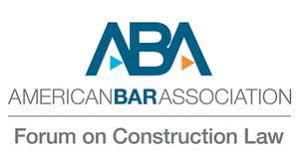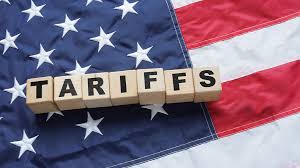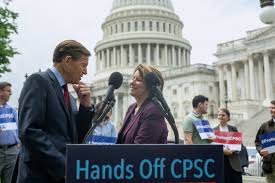The Sotomayor military reserve pay ruling marks a significant shift in how federal civilian employees who also serve as military reservists are compensated during periods of active duty. This Supreme Court decision clarified that federal employees called to active military service during a national emergency are entitled to receive differential pay—the difference between their civilian salary and military pay—without having to prove that their service was directly connected to the emergency itself. For decades, reservists faced uncertainty and legal hurdles when seeking full compensation, especially when their civilian pay exceeded their military wages.
This ruling not only ensures financial fairness for reservists but also sets a broader precedent for federal employment law and the integration of civilian and military careers. The Court’s interpretation simplifies access to benefits and strengthens the protections of reservists who balance civilian jobs with military service. In this article, we will explore the background of the ruling, the statutes involved, the Supreme Court’s reasoning, its practical impact on federal employees, and what it means for the future of reserve pay equity.
Key Points Covered in This Article
- What military reserve pay is and who qualifies.
- The legal framework surrounding the differential pay statute.
- The Supreme Court’s interpretation in the Sotomayor military reserve pay ruling.
- Practical guidance for federal employees seeking compensation.
- Broader legal and policy implications of the ruling.
- Frequently asked questions to help reservists understand their rights.
The following sections will break down the ruling in detail, explaining not just the legal nuances but also the real-world implications for federal civilian employees serving in the military reserves. This is your complete guide to understanding the case and how it affects pay equity for reservists nationwide.
What is the Military Reserve Pay Issue?

Understanding the military reserve pay issue is crucial to grasp why the Sotomayor military reserve pay ruling matters. At its core, the issue revolves around how federal civilian employees who are also members of the military reserves are compensated when called to active duty, particularly during a national emergency.
Definition of Differential Pay for Reservists
Differential pay refers to the difference between an employee’s civilian salary and the pay they receive from active military service. Federal civilian employees who are also reservists often earn more in their civilian roles than they would on military orders. Without differential pay, reservists could face a financial penalty for serving their country, effectively being underpaid for fulfilling dual responsibilities.
For example, if a federal air traffic controller who is a reservist earns $120,000 annually but is called to active duty and receives $80,000 from military pay, differential pay ensures they receive the remaining $40,000 from their civilian employer. This policy aims to eliminate financial disadvantage, encouraging reservists to serve without fear of losing income.
Who is Covered – Federal Civilian Employees and Military Reservists
Not all military personnel are affected by this ruling. The eligibility specifically applies to:
- Federal civilian employees who hold permanent, full-time positions in the federal government.
- Individuals who are active members of the military reserves, including the Army, Navy, Air Force, Marine Corps, and Coast Guard Reserves.
- Employees called to active duty during a national emergency or contingency operation.
State or local employees, contractors, and civilians not officially designated as federal employees are not covered under this statute, although similar protections may exist at the state level.
Why the Case Arose – Background of the Dispute
The case that led to the Supreme Court ruling began with Nick Feliciano, a Coast Guard reservist and federal air traffic controller. During a national emergency, Feliciano was called to active military service. While serving, he noticed that his military pay was significantly lower than his civilian federal salary. He requested the differential pay he believed he was entitled to under federal law, but his claim was denied on the grounds that his service was not sufficiently connected to the national emergency.
The dispute went through lower courts, with mixed interpretations of the law. Some courts required proof that the reservist’s active duty was directly tied to the emergency, creating a barrier for many federal employees seeking fair compensation. This ambiguity prompted the case to reach the Supreme Court, ultimately leading to the Sotomayor military reserve pay ruling.
Key Takeaways from This Section:
- Differential pay ensures reservists are not financially penalized when serving in the military.
- Only federal civilian employees who are also reservists are covered under the law.
- Ambiguity in prior interpretations created a legal challenge that necessitated a Supreme Court decision.
The Legal Framework Behind the Ruling

To fully understand the Sotomayor military reserve pay ruling, it’s essential to explore the legal framework that governs differential pay for federal reservists. This section breaks down the relevant statutes, prior interpretations, and the role of the Supreme Court in clarifying the law.
Key Statutes and Terms – Differential Pay and “During a National Emergency”
The primary statute at the center of this ruling is the differential pay statute enacted in 2009. This law ensures that federal employees called to active military service are entitled to their civilian pay minus their military pay when serving during a national emergency. Key terms include:
- Differential Pay: The additional compensation owed to a federal employee to make up for the difference between military and civilian salaries.
- National Emergency: A formally declared situation by the President or Congress that requires the activation of military reserves.
- Contingency Operation: A military operation designated by the Department of Defense that may involve reservists being called to active duty.
The statute was designed to protect reservists from financial disadvantage and to encourage participation in national defense without economic penalty.
Previous Interpretation – Lower Courts’ View
Before this Supreme Court decision, lower courts often required reservists to demonstrate that their active duty was directly connected to the national emergency to qualify for differential pay. In practice, this meant:
- Reservists whose duties were support-oriented or administrative were sometimes denied differential pay, even though they served during the national emergency.
- Courts narrowly interpreted the law, creating uncertainty and inconsistency for employees seeking their rightful compensation.
This strict interpretation led to disputes like the Feliciano case, where federal employees serving honorably were denied full civilian pay because their specific role during activation didn’t satisfy the lower court’s criteria.
The Role of the Supreme Court and Justice Sotomayor
The Supreme Court of the United States ultimately clarified the law. The Court held that federal civilian employees called to active duty during a national emergency are entitled to differential pay regardless of whether their service is directly linked to the emergency. Key points include:
- The decision was a 5‑4 majority, highlighting the legal and policy complexities of the case.
- Justice Sonia Sotomayor joined the majority, lending her support to a broad interpretation that favors pay equity for federal reservists.
- The Court emphasized the intent of Congress in enacting the 2009 statute: to ensure reservists are not financially penalized for fulfilling their dual roles as civilian employees and military personnel.
The ruling overturned lower court interpretations that had limited access to differential pay, providing a clear legal pathway for all eligible federal reservists.
Key Takeaways from This Section:
- The 2009 differential pay statute protects federal reservists financially during national emergencies.
- Lower courts previously restricted pay eligibility, creating legal uncertainty.
- The Supreme Court, with Justice Sotomayor in the majority, clarified and broadened eligibility, ensuring fair compensation for federal civilian employees serving in the reserves.
Details of the Ruling: “Sotomayor Military Reserve Pay Ruling” Explained
The Sotomayor military reserve pay ruling is a landmark decision that directly impacts federal civilian employees who serve in the military reserves. Understanding the Court’s reasoning, the practical effects, and the dissenting opinions is critical to grasp the full significance of the case.
What the Court Held
The Supreme Court held that federal civilian employees called to active military duty during a national emergency are entitled to differential pay, even if their specific service is not directly tied to the emergency. This broad interpretation removes the burden on reservists to prove a direct connection between their role and the emergency itself.
- Majority Opinion: The Court emphasized Congress’s intent in enacting the 2009 statute—to prevent financial disadvantage for reservists.
- Practical Effect: Federal agencies must now ensure all eligible employees receive the pay difference automatically, simplifying compliance and reducing disputes.
What This Means in Plain Language
For reservists, the ruling is straightforward:
- If you are a federal employee and a reservist called to active duty during a national emergency, you are entitled to full civilian pay minus military pay.
- You do not have to demonstrate that your role directly contributed to the emergency effort.
- This means administrative, logistical, or support roles now clearly qualify, removing ambiguity and ensuring equitable treatment.
For example, a federal Coast Guard reservist performing office-based planning tasks during a national emergency is just as eligible for differential pay as a reservist serving on the front lines.
Dissenting Opinion and Its Concerns
The dissent, led by Justices who disagreed with the broad interpretation, raised concerns that:
- The ruling could extend eligibility beyond what Congress intended, potentially creating a larger financial obligation for the federal government.
- Nearly all reservist activations during national emergencies could now qualify, regardless of their direct contribution to the emergency effort.
- This could strain agency budgets and create challenges for verifying claims.
Despite these concerns, the majority concluded that protecting reservists from financial penalties aligned better with the statute’s purpose.
Role of Justice Sotomayor and Why the Ruling Is Associated With Her
Although Justice Sotomayor did not author the opinion, her joining the majority is significant:
- It reflects her longstanding support for protecting workers’ and reservists’ rights.
- Media outlets and legal analyses frequently reference her involvement, giving the ruling public recognition as the Sotomayor military reserve pay ruling.
- Her position underscores the Court’s alignment with pay equity and fair treatment of federal employees who serve in the reserves.
Key Takeaways from This Section:
- The Court broadened eligibility for differential pay, eliminating the need to prove a direct connection to the emergency.
- Reservists in any role during a national emergency are protected.
- The dissent highlighted potential budgetary and policy concerns, but the majority prioritized equity and statutory intent.
- Justice Sotomayor’s participation underscores the ruling’s significance and aligns it with worker protections.
Who Benefits – Impact of the Ruling
The Sotomayor military reserve pay ruling has wide-reaching implications for federal civilian employees serving in the military reserves. It not only clarifies eligibility for differential pay but also sets a precedent for fair treatment and pay equity. Understanding who benefits, how agencies must respond, and the broader policy implications is crucial for both employees and employers.
Federal Civilian Employee‑Reservists
The most direct beneficiaries of this ruling are federal civilian employees who are also military reservists. This includes:
- Air traffic controllers, administrative personnel, engineers, and other federal employees with reservist status.
- Reservists called to active duty during any national emergency or contingency operation.
The ruling ensures that these employees receive the difference between their federal civilian salary and their military pay, protecting them from financial loss during active service. It effectively removes ambiguity that previously limited differential pay for employees in support or non-combat roles.
The Scale of Potential Beneficiaries
The federal workforce includes a significant number of reservists. According to data from the Department of Defense and federal workforce statistics:
| Category | Approximate Number of Reservists in Federal Employment | Notes |
|---|---|---|
| Army Reserve | 45,000 | Includes various civilian federal roles |
| Air Force Reserve | 30,000 | Civilian employees across multiple agencies |
| Coast Guard Reserve | 10,000 | Many are operational and administrative personnel |
| Navy and Marine Corps Reserve | 25,000 | Civilian federal employment overlaps with military duties |
In total, tens of thousands of federal employees could now be eligible for differential pay, which underscores the ruling’s significance for workforce morale and retention.
Agencies and Employers – How They Must Respond
Federal agencies are required to adjust policies and procedures to ensure compliance with the Supreme Court’s decision. Key responsibilities include:
- Updating human resources policies to reflect broadened eligibility.
- Informing employees of their differential pay rights.
- Streamlining claims and documentation processes to reduce delays.
- Budgeting appropriately to cover potential back pay for eligible employees.
Failing to comply could result in legal challenges or employee grievances, making proactive implementation critical.
Broader Implications for Military Reserve Service Pay Equity
Beyond individual beneficiaries, the ruling has broader implications for federal employment and military policy:
- Retention and Recruitment: Clear pay protections may encourage more federal employees to join the reserves, knowing they will not suffer financial loss.
- Financial Fairness: Ensures equity across roles, eliminating penalties for administrative or support staff serving during emergencies.
- Legal Precedent: Establishes a strong interpretation of statutes protecting employee pay during national emergencies, potentially influencing future legislation or litigation.
- Agency Accountability: Federal employers are now more accountable for ensuring reservists receive timely and accurate pay adjustments.
Key Takeaways from This Section:
- Federal civilian employee-reservists are the primary beneficiaries of the ruling.
- Tens of thousands of employees across multiple reserve branches could be affected.
- Agencies must update policies, communicate rights, and budget for differential pay.
- The ruling strengthens pay equity and incentivizes reservist participation in federal service.
Practical Steps for Affected Employees

With the Sotomayor military reserve pay ruling clarifying eligibility, federal civilian employees who serve in the reserves now have a clear path to claim differential pay. This section outlines how to determine eligibility, file claims, and navigate potential challenges.
How to Check if You Qualify Under the New Interpretation
Federal reservists should take the following steps to determine if they are eligible for differential pay:
- Confirm Federal Employment Status: Ensure your civilian role is a permanent, full-time federal position.
- Verify Reserve Membership: Check that you are an active member of a recognized military reserve branch.
- Determine Active Duty During National Emergency: Review your orders to confirm that your service aligns with a national emergency declaration or contingency operation.
- Compare Salaries: Calculate the difference between your civilian pay and military pay to estimate the differential owed.
By completing these steps, employees can confirm their eligibility and prepare the necessary documentation for claims.
Filing a Claim – Agencies, Boards, and Timeline
Once eligibility is confirmed, employees should follow these steps to file a claim:
- Submit Documentation to Your Agency: Provide active duty orders, civilian pay records, and military pay records.
- Agency Review: Your federal agency will review your claim and calculate the differential pay.
- Appeal if Denied: If your claim is rejected, you may appeal to the Merit Systems Protection Board (MSPB) or the relevant federal employment board.
- Timeline: Claims should generally be filed within a reasonable period of active duty completion, but agencies may accept retroactive claims, especially following this Supreme Court decision.
Common Challenges and What to Watch For
Despite the ruling, employees may encounter challenges, including:
- Proving Service During a National Emergency: Ensure orders clearly indicate activation under a national emergency or contingency operation.
- Calculating Pay Difference Accurately: Ensure both civilian and military pay records are complete and correct.
- Backlog of Claims: Agencies may experience a surge of claims following the ruling, potentially delaying processing.
- Communication Gaps: Some HR departments may be unfamiliar with the new ruling, requiring employees to proactively provide guidance and documentation.
Advice for Employers and HR Departments
To comply with the ruling and support employees:
- Update HR Policies: Clearly define differential pay eligibility and processes.
- Inform Employees: Ensure all federal reservists are aware of their rights and the steps to claim differential pay.
- Streamline Processing: Establish dedicated points of contact and clear submission guidelines.
- Maintain Records: Keep accurate civilian and military pay records to avoid disputes.
Key Takeaways from This Section:
- Employees should verify their status, military orders, and pay differences to determine eligibility.
- Claims can be filed with the agency and appealed if necessary, using the Merit Systems Protection Board.
- Common challenges include verifying orders, calculating pay, and processing delays.
- Employers must update policies, communicate rights, and streamline claims to ensure compliance.
Wider Legal and Policy Implications
The Sotomayor military reserve pay ruling extends beyond individual federal employees and has important implications for federal employment law, military reserve policy, and future legal interpretations. This section explores how the ruling may shape policy, employee rights, and agency responsibilities.
For Federal Employment Law
The ruling reinforces the principle that statutory protections for federal employees should be interpreted in favor of equity and fairness. Key implications include:
- Broad Interpretation of Statutes: Laws that provide benefits “during a national emergency” are likely to be read broadly to protect employees, reducing legal ambiguity.
- Precedent for Future Cases: Agencies and courts may rely on this ruling when resolving disputes about other benefits tied to emergency service or dual-status employment.
- Strengthened Worker Protections: Federal employees now have a clearer right to differential pay, supporting overall workforce morale and trust in government systems.
For Military Reserve Policy and Civilian Workforce Integration
The decision also affects military and personnel policies by addressing challenges unique to dual-role employees:
- Encouraging Reservist Participation: Clear pay protections reduce the financial risk of serving in the reserves while maintaining civilian employment.
- Retention of Experienced Personnel: Ensuring full compensation helps retain experienced federal employees who may otherwise hesitate to serve.
- Streamlined Integration: Agencies must coordinate civilian and military employment systems to accurately calculate and distribute differential pay.
For Future Cases and Challenges
While the ruling resolves current ambiguity, it may shape future litigation and legislation:
- Definitions of “National Emergency”: Future disputes may arise over what qualifies as a national emergency, especially in complex or limited-scale activations.
- Application Beyond Federal Employees: While the ruling focuses on federal employees, other government levels may look to this decision as a model for pay protections.
- Congressional Response: Lawmakers may amend statutes or clarify legislative intent to address budget or policy concerns raised by dissenting opinions.
International or Comparative Perspective (Optional)
Though primarily a U.S. legal issue, the ruling highlights a common challenge faced by countries with dual-role civilian-military employees: ensuring fair pay during national crises. Countries like Canada, the UK, and Australia provide structured differential pay or benefits for reservists, offering useful models for U.S. policy refinement.
Key Takeaways from This Section:
- The ruling strengthens federal employment law by clarifying statutory protections.
- It encourages reservist participation and retention by ensuring fair pay.
- Sets a precedent for future legal and policy challenges, including definitions of national emergencies and pay rights.
- Highlights broader lessons for civilian-military workforce integration and international comparisons.
Frequently Asked Questions (FAQ)
The Sotomayor military reserve pay ruling raises several common questions among federal civilian employees serving in the military reserves. This FAQ section addresses practical concerns and helps reservists understand their rights under the ruling.
What Does “During a National Emergency” Mean Under This Ruling?
“During a national emergency” refers to any period in which the President or Congress formally declares a national emergency or a contingency operation that activates reserve personnel. Employees do not need to prove that their specific duties were directly tied to the emergency—simply being on active duty during this period qualifies.
Do I Have to Be Directly Involved in Operations Abroad to Qualify?
No. The Court’s ruling makes it clear that all roles—including administrative, logistical, or support positions—qualify for differential pay, as long as the reservist is called to active duty during the emergency.
Does This Apply Only to Certain Branches of the Reserves?
The ruling applies broadly to federal civilian employees who serve in any recognized branch of the military reserves, including the Army, Navy, Air Force, Marine Corps, and Coast Guard. Eligibility is tied to federal employment status, not the branch of service.
If I Served Before the Ruling, Can I Still File a Claim?
Yes. Employees may be able to file retroactive claims for differential pay owed from prior activations during a national emergency. Documentation, including active duty orders and pay records, is required to support these claims.
How Much Differential Pay Will I Receive?
Differential pay is calculated as the difference between the civilian salary and the military pay received during active duty. Agencies are responsible for ensuring the calculation is accurate and for providing payment promptly.
Will This Ruling Affect Non-Federal Civilian Employees Who Are Reservists?
No. The ruling specifically addresses federal civilian employees. Non-federal employees, such as private-sector workers, are subject to separate regulations like the Uniformed Services Employment and Reemployment Rights Act (USERRA), which provides similar but distinct protections.
What If My Civilian Job Isn’t a Federal Job?
Only federal civilian employees are covered under this statute. Employees in state, local, or private-sector jobs should review USERRA protections or applicable local laws regarding pay during reserve activation.
Does This Impact State or Local Government Employees Who Serve as Reservists?
Not directly. State and local government employees may have different policies regarding pay during reserve duty. Some states offer similar differential pay programs, but these are not governed by the Supreme Court ruling.
Key Takeaways from the FAQ Section:
- Employees do not need to be directly involved in emergency operations to qualify.
- The ruling applies to all federal civilian employees who are reservists, regardless of branch or role.
- Retroactive claims may be possible for prior periods of active duty.
- Non-federal employees are governed by USERRA or local laws, not this ruling.
Summary & Key Takeaways

The Sotomayor military reserve pay ruling is a landmark decision that significantly clarifies differential pay eligibility for federal civilian employees serving in the military reserves. By removing the requirement to prove a direct connection to a national emergency, the Supreme Court has broadened access to pay protections, ensuring that all reservists are treated fairly and equitably.
Key Points to Remember
- Broad Eligibility: Federal civilian employees called to active duty during a national emergency are entitled to differential pay, regardless of their specific role.
- Financial Protection: Differential pay ensures reservists do not face financial disadvantages when balancing military and civilian responsibilities.
- Agency Responsibilities: Federal agencies must update HR policies, communicate rights to employees, and streamline claims processes to comply with the ruling.
- Retroactive Claims: Employees may be eligible to file claims for past periods of active duty during a national emergency.
- Policy and Legal Implications: The ruling reinforces fair treatment for federal reservists, sets precedent for interpreting similar statutes, and strengthens workforce morale and retention.
Final Thoughts
The Sotomayor military reserve pay ruling not only resolves longstanding ambiguities in the law but also represents a major step toward equity for reservists serving in dual roles. By ensuring that federal employees can serve their country without financial penalty, the decision supports both national security and workforce stability. Federal employees who are reservists should review their eligibility, confirm their active duty records, and pursue differential pay as appropriate.
This ruling is a crucial reminder that fair pay and recognition for service are essential components of a strong and motivated federal workforce.




